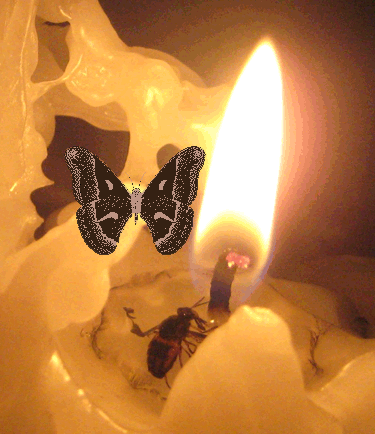
|
Lorna Mills and Sally McKay
Digital Media Tree this blog's archive OVVLvverk Lorna Mills: Artworks / Persona Volare / contact Sally McKay: GIFS / cv and contact |
View current page
...more recent posts
"Did you see the MOCCA show?" and "What did you think?" are the two questions that Toronto art denizens have been asking one another over coffee and pints all summer. This is Paradise | Place as state of mind: The Cameron Public House and 1980’s, curated by Rae Johnson and Herb Tookey, is a loaded exhibition that has triggered all kinds of local conversations, opinions and debates. (Tomorrow, August 21st, is the last day).Fran Schechter, reviewing the exhibition for NOW Magazine, complained that the curators' were insiders in the scene they were representing. "Maybe someone with more objective distance would have brought a more critical eye to this material." So, yeah sure, another curator would have done a different kind of job, but they didn't, did they? The only reason the exhibition exists at all is because Rae Johnson took it upon herself to make it happen. It's not an exhibition with a detached and theoretically honed curatorial premise. This is Paradise is passionate and rife with conflicting emotions. For many, it's deeply sad — there are a lot of dead artists represented. For me, as for so many others who came to the exhibition, these deaths represent a cultural loss, but also losses that are intimate and personally painful. Add to this sadness the fact that for many of the living artists represented, the work on display connects them to past moments that they have digested and moved beyond in their current practice — what you have, for a large portion of the audience, is a show that evokes a pardoxical nest of charged and unresolved tensions. As Leah Sandals pointed out in her review, the show divides viewers into two camps, those who were "there" in the 80s Cameron scene and those who weren't. Of course the division is actually a bit more blurry. I wasn't there, for example, but many of my nearest and dearest were. I get the emotional charge, despite the fact that it is not my own history that is represented. Bryne McLaughlin's main complaint is that for people who weren't there, the show falls short as an archival/historic document. This is not surprising, given that the curators themselves are deeply and personally involved. But the show is too bittersweet to really come of as a narcissistic celebration of carefree times gone by. It's more sad than heroic, more blatant than nostalgic. There are lots of different ways to curate, just as there are lots of different ways to engage with history. Methodological purists want to see a critical agenda laid out, they want to be able to parse the exhibition legibly, like a set of artifacts in a museum with didactic tags that explicitly state the works' continued relevance to culture in the present day. This show is much messier, more conflicted, more annoying, more implicated, more vulnerable and more alive than that. It's still history, however — an open-ended, resonant, recent history that manifests in the lives of the people who live it and those they continue to influence. |




How I spent my summer vacation... There are a lot of giant Shelobs in the ceiling of the basement at the cabin. You can count dozens and dozens without even turning your head. They are dark brown and sort of glisteny, really big and muscular and they just sit around guarding their egg sacks, of which there are hundreds. You have to go in the basement because lots of important things are down there, like the water heater, the pump, the wheel barrow, seasonal dampness that needs to be monitored, etc. I have made a kind of uneasy peace with the basement arachnid population because they don't move around much and so long as I crouch all the time I'm down there and don't actually brush my head against them, they don't get in my hair. This year we were puttering around in the basement for a little while, doing this and that and marvelling at all the critters. But when I came up out of the basement into the forest ... horrors! There was a giant spider on the back of my shoulder. I flailed around for a little while with a elevated heart rate saying stuff like "Ah! Ah! Ah!" and "Is it off me?! Is it off me?!" Once I'd calmed down, the real severity of the situation set in. If those spiders in the basement ceiling were now prone to dropping down onto passersby below, then I was going to have a problem fulfilling all my occasional duties as a member of the custodial team for the property. Several hours later, however, I noted another big spider climbing on a tree outside. It was the same kind of spider as the one that had been on my back.  As you can clearly see from the diagram above, the basement spiders and the outside spiders are totally different species. While they are roughly the same size, the inside ones, as mentioned above, are dark brown, and their limbs are hard-edged and well-defined. The outside ones are light grey and their legs are sort of feathery. The one that was on me probably dropped down from the outside wall as I was exiting the basement. The upshot of the story: I can still go into the basement to check on things because I actually have no new evidence that basement spiders will drop off the ceiling into my hair. Also, nobody bit me. Uneasy interspecies peace restored! |